On other pages
- Major awards for three Taylor-Schechter Unit projects
- The Genizah for all
- Volume on medicine wins praise
- Inside the world of emotions
- Professor's inaugural lecture
- How you can help the Taylor-Schechter Unit
- BBC-TV films Ben Ezra Synagogue
- Ernest Wiesenberg - Pietist and rationalist
- Shelomo Morag - Linguist and Semitist
Major awards for three T-S projects
The Unit's work has enjoyed the benefit of more than £60,000 funding from three sources over the past few months.
The final sum made available in the context of HEFCE's Non-Formula Funding (Follett) has been used to support three projects describing Genizah fragments.
The first award made by the Friedberg Genizah Project in New York - whose launch was featured in the last issue of this newsletter - has enabled Ben Outhwaite to prepare for publication catalogues of the Biblical Hebrew items in the Genizah Collections. Malcolm Davis, now of the Brotherton Library at the University of Leeds, worked on these some years ago.
The Lauffer Family Charitable Trust has, in memory of David Lauffer, generously met the cost of engaging Robert Jefferson to reconserve some of the binders which have undergone particularly heavy use by researchers in recent decades.
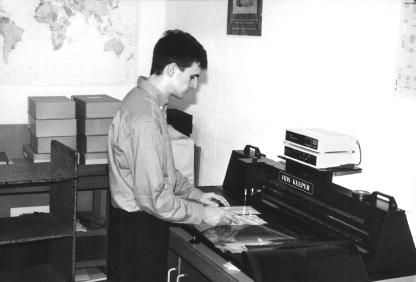
Robert Jefferson reconserving the binders of fragments in the T-S Unit, a project funded by the Lauffer Family Charitable Trust
Other substantial contributions to Genizah funds have come from Mrs Linda Noe Laine, of Louisiana ($5,000); Raymond and Pamela Burton (£1,000); and the Worshipful Company of Actuaries (£1,000), at whose annual dinner - presided over by the Master, Mr Solomon Green - Professor Stefan Reif was the guest speaker.
Generous assistance has again been received from Mrs Felise Davies and Mr Malcolm Kayne (£500); the H. Joels Charitable Trust (£500); Harry and Gertrude Landy (£500); the Lewis Foundation (£500); the Sidney and Elizabeth Corob Charitable Trust (£300); and the F. & D. Worms Charitable Trust (£300).
Others who have kindly renewed their support are Ruth and Conrad Morris (£250); Ruth and Michael Phillips (£250); the Helene Sebba Charitable Trust (£250); the P. & H. Maurice Charitable Trust (£150); and the Rubin Foundation Charitable Trust (£150).
The Unit is also grateful to Mr Geoffrey Ognall (£125); Diana and Anthony Rau (£125); Elizabeth and Philip Beckman (£100, from the Benjamin Leighton Charitable Trust); Dr and Mrs N. D. Citron (£100); Renata and Henry Knobil (£100); Mr Leo Sterling (£100); and to the anonymous donors of £100 in memory of Dr Haskell Isaacs.
Other smaller or anonymous donations, amounting to over £4,000, are equally appreciated.
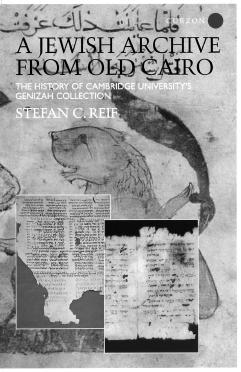
"A Jewish Archive'': breathing new life into old fragments
The Genizah for all
It is now over a century since the Genizah Collection was formally presented to the University of Cambridge. Over half a century has passed since matching discoveries were made among the Dead Sea Scrolls. And twenty-five years have elapsed since the Genizah Research Unit at Cambridge began a systematic programme of conservation, microfilming, research and publication.
Many scholars have exploited this unique source to rewrite almost every aspect of Jewish history in the Mediterranean area of the Middle Ages but, until now, none has attempted to summarize the impact made by the discoveries, or to tell the fascinating tale of how the Collection was amassed in Cairo and transferred to Cambridge University Library and, to a lesser degree, to other academic institutions in the West.
Books and articles dealing with highly specialized topics have been aimed primarily at scholars; popular publications have touched on the subject in only an elementary manner. Vitally needed was a volume both scholastically sound and for a wide readership.
Stefan Reif's new work, A Jewish Archive from Old Cairo (Curzon Press, London, 2000), meets those needs. Written in a lively and readable fashion, it includes intriguing quotations from the original manuscripts and provides detailed reading lists - for both English and Hebrew - in each area covered.
There are 277 pages, with 60 plates, many of them in colour, as well as detailed indexes (ISBN 0 7007 1276 3, hardback, £35; 0 7007 1312 3, paperback, £14.99).
Retelling a number of remarkable stories, Professor Reif explains how Cairo came to have its unique archive; how Cambridge developed its interests in Hebrew and Jewish matters; and how several colourful figures effected the connection between the centres.
Also summarized, with illuminating and sometimes astonishing examples, are the importance of the Genizah material for each area of Jewish cultural history, and the manner in which the conservation, deciphering and publication of the manuscripts evolved over the course of a century.
The volume serves as a helpful reference work for students and teachers of Jewish history and literature.
Perhaps more importantly, it introduces the topic to those interested in uncovering the secrets of the past but lacking an awareness that the Genizah's contents are at least as important for this purpose as those of the Dead Sea Scrolls.
The book's Jerusalem launch will take place in the presence of distinguished guests at the International Convention Centre (Binyanei Ha'uma) on Sunday, 23 April, at 7.30pm, sponsored by Mr Joe Dwek CBE, Mr T. H. Reitman SCM, and the Beit Morasha Academy of Jewish Culture.
Tickets are available from Mrs Chana Romanetsky, at Beit Morasha in Jerusalem - telephone, (02) 621 6446; fax, (02) 621 6467; e-mail, bmorasah@inter.net.il
Volume on medicine wins praise
Dr Y. Tzvi Langermann, who teaches Arabic at Bar-Ilan University, reviewed one of the volumes in the Genizah Series in the Jewish Quarterly Review LXXXVII, pages 200-201.
His evaluation of the volume Medical and Para-medical Manuscripts in the Cambridge Genizah Collections, by H. D. Isaacs, assisted by Colin F. Baker, noted the Genizah's importance and included the following remarks:
"In the course of this century, hundreds of Genizah documents have been published, often the same item more than once, and not a few books have been built entirely on the rich materials preserved in that collection. However, the systematic classification of Genizah materials by subject, at least those found in the Cambridge University Library, has been undertaken only in the last decade and a half.
The result is a series of catalogues containing concise descriptions and pertinent bibliography, prepared and introduced by leading scholars, and published in elegant (though expensive) volumes by Cambridge University Press…
The introduction is concise and, on the whole, well informed; the listings are orderly and precise; and the facsimiles at the end are very well chosen. The volume is an excellent piece of work, and its publication a boon to the study of the history of medicine.''
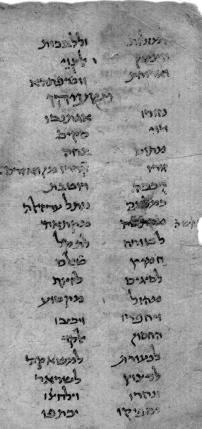
Prophetical texts: detail from Genizah MS Or.1080 1.84
Inside the world of emotions
When I came to Cambridge in the spring of 1998, I had a number of research goals. The first involved a project in Bible commentary with which I have lately been concerned, entitled "The Exegetical Work of Rabbi Isaac bar Samuel the Sefaradi.''
Rabbi Isaac was a distinguished member of the Fustat community in the late eleventh and early twelfth centuries and is considered to have been a close friend of the foremost Negidim (leaders) of Egypt. He held office in the Egyptian capital, as a senior judge, over several decades.
In addition to his exegetical work on the Bible, he was a prolific commentator on Talmud and liturgical poetry. His writings on the books of the Former Prophets - my own special field of interest - have survived in manuscripts at the British Library in London, the library of the late David Solomon Sassoon, and the Library of the Asian Peoples, in St Petersburg, Russia.
I visited Cambridge to check, inter alia, whether anything existed of Rabbi Isaac's commentaries on the Prophets (in particular, the Former Prophets) among the Genizah fragments. For the time being, I have found nothing written by him in the field of Bible exegesis.
Nevertheless, there exist in the Genizah material several documents relating to Rabbi Isaac's judicial work at the rabbinic court-house in Fustat.
He is mentioned as the ruling judge, or his signature occurs at the foot of various documents from around 1080 until around 1130. The documents are found mainly in T-S 6J and T-S 8J.
In addition to the subject of Rabbi Isaac, I have been describing and analysing the glosses to the books of the Prophets - the word lists that generally follow the sequence of the Bible texts and offer translations and interpretations of selected words and phrases.
I propose to analyse such glosses as T-S NS 221.52 on I Samuel 9:7-11:21; Or.10801.84 on II Kings 6:25-25:30 and Isaiah 1:4-2:6; T-S K7.7 on Isaiah 39:2-51:7; and others. I shall deal with these primarily from a typological point of view.
My intention is to assess their diachronical position in relation to the complete Targums on the books of the Prophets, and their place in the teaching of the prophetical books during the Genizah period.
I have dedicated much time at Cambridge University to a description of documentary material - particularly in the sequence 6J-10J which contains numerous letters - for investigating the emotions of members of the "Mediterranean Society'', as the late S. D. Goitein referred to them.
It is easy to conclude from these that many of the men and women among them were, verbally, clearly transparent. The circumstances of their lives, which kept them apart from each other - journeys for the purposes of trade, separation of couples, escape from certain regimes or from creditors - encouraged their outbursts of emotion, which are to be found in virtually every exchange of letters in these and similar Genizah series.
I intend to devote myself to this world of emotions within the nuclear family: parents and children, brothers and sisters.
SHIMON SHTOBER
Bar-Ilan University
Professor's inaugural lecture
Professor Stefan Reif, Director of the Genizah Research Unit, who was recently appointed to a chair in Medieval Hebrew Studies at Cambridge, delivered his inaugural lecture in the University at the School of Pythagoras, St. John's College.
The Vice-Chancellor, Professor Sir Alec Broers, presided over the proceedings which were attended by about a hundred distinguished academics and visitors. They included the Masters of St. John's and Pembroke Colleges, and the President of Wolfson College.
The lecture - entitled "Why Medieval Hebrew Studies?'' - discussed nineteenth-century attitudes to the medieval period, and ways in which they have changed, to a substantial degree, in more recent times.
Professor Reif pointed out that Israel Abrahams, who taught Rabbinics at Cambridge in the early twentieth century, was one of the first to indicate that the Jewish Middle Ages were not full of doom, gloom and pedantry.
This is a view only now widely appreciated in regard to the achievements of the Asian peoples as a whole during that period.
Slides and overhead projection were used to show examples of medieval manuscripts that testified to stunning theology, super-rational exegesis, and surprisingly scientific attitudes to the use of language as vernacular.
Among other items discussed were comments by the twelfth-century Bible commentators Abraham Ibn Ezra and Samuel ben Meir, and a number of exciting poetic and liturgical fragments from the Genizah.
One of these contained a special prayer to be recited by medieval pilgrims to Jerusalem in the pre-Crusader period, calling on God to "shake it free of its dust, cleanse it of its impurities, repair its breaches, and raise it up from its ruins.''
More prosaic items culled from Cambridge Genizah fragments included a crusader note in Latin; a certificate attesting to the kosher nature of some cheeses; an appeal to a communal leader for financial help; the variety of methods used for dating documents; and a doctor's faith in God rather than in his own medicine.
How you can help the Unit
IF YOU would like to receive Genizah Fragments regularly, to enquire about the Taylor-Schechter Genizah Collection, or to know how you may assist with its preservation and study, please write to: Professor S. C. Reif, Director of the Taylor-Schechter Genizah Research Unit, at Cambridge University Library, West Road, Cambridge, CB3 9DR, England.
THE LIBRARY may also be reached by fax (01223) 333160, or by telephone (01223) 333000. The Internet access is at http://www.lib.cam.ac.uk/Taylor-Schechter. Enquiries by e-mail should be addressed to genizah@lib.cam.ac.uk.
READERS NOT already supporting the Unit are asked to help ensure the continuity of this publication by making a small, regular gift. The sum of £5 (UK) or $10 (abroad) is suggested; payment may be made to Cambridge or to the American Friends.
ALL CONTRIBUTIONS to the Unit, whether for the research programme or for its other activities, are made to the "University of Cambridge'', which enjoys charitable status for tax and similar purposes.
IN THE USA, the American Friends of Cambridge University support the Taylor-Schechter Collection with their unfunded grant number 7/78. If you are interested in supporting this AFCU project, please contact the Director of the Annual Appeal at: 708 Third Avenue, 14th Floor, New York, NY 10017 (tel: 212-880-2840). Transfers of such funds are regularly made to Cambridge from the USA.
THE AFCU is recognized by the IRS as a charitable organization, and contributions are legally deductible for United States income tax purposes. They are similarly deductible in Canada even if made directly to Cambridge.
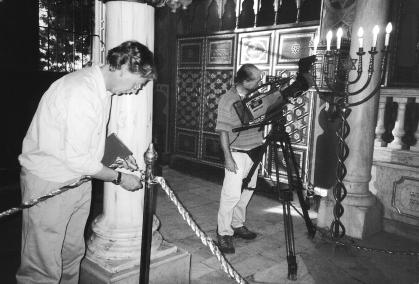
The BBC crew filming the treasures inside the historical Ben Ezra Synagogue in Cairo
BBC-TV films in Cairo
From the Editor's desk
After working for many years in Cambridge on the Genizah documents, I was both excited and intrigued to visit the Ben Ezra Synagogue in Cairo, where most of the fragments were amassed and stored a thousand years ago.
The purpose of my visit was to participate in a BBC-TV series on the history of economics from ancient times to the modern world.
The six programmes, under the title "Wealth of Man'', are being produced and directed by Charles Bruce, assisted by Kim Barrington.
The interviews are being conducted by BBC economics editor, Peter Jay; the filming by Colin Clarke; and the sound by Andy Cottom. The programmes will be transmitted by BBC2 in July and August.
During the day I spent filming with the BBC crew, I explained the importance of the Genizah material as a source for economic developments in the medieval Mediterranean area, and took the opportunity of introducing the Cambridge Taylor-Schechter Collection to potential viewers.
Peter Jay and I discussed the content of several fragments of particular importance to the history of economics. They represent the earliest known cheques and bank statements, dating from at least two centuries before the equivalent phenomena in Italian banking.
While in Cairo, I met the head of its Jewish community, Madame Carmen Weinstein, and we discussed plans for the opening of an exhibition on the history of the Genizah on the Ben Ezra site, and the possibility of constructing a museum next to the Ben Ezra Synagogue, should external interest and funding be forthcoming.
I also met archaeologist Peter Sheehan, who is involved in excavating sections of the larger site. We examined the masteba in front of the bimah, on which I offered views regarding its possible historical development.
There is a palpable feeling of excitement in Cairo about the plans to involve Jews, Muslims and Christians in the restoration of much of medieval Cairo. Happily, the Genizah synagogue features prominently in these arrangements.
STEFAN C. REIF
Director, Taylor-Schechter
Genizah Research Unit
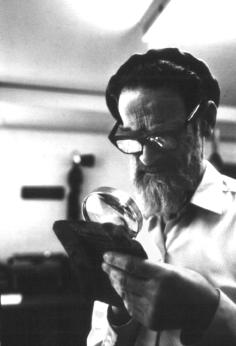
Pietist and rationalist
Ernest Wiesenberg, rabbi, scholar and Genizah researcher, died in London on 21 January, 2000, aged 90. The following tribute is a modified version of The Times obituary published on 17 February.
The loss of Rabbi Dr Ernest (Ephraim Yehudah) Wiesenberg will be keenly felt in a wide variety of circles.
Generations of those who read Hebrew texts with him, primarily at University College, London, but also at Jews' College, the capital's Orthodox seminary, will remember the personal and educational influence of a warm, caring and hospitable teacher.
Colleagues in the world of Semitic scholarship will recall a remarkable reservoir of knowledge from which he - and, indeed, they - could draw with ease. The wider public will call to mind his sweet smile and constant cheerfulness.
Wiesenberg maintained a successful and popular presence in numerous worlds. Strictly Orthodox in his Jewish practice, he counted Reform rabbis and firm secularists among his friends.
He could discuss the iconoclastic theories of Biblical critics in the afternoon, and deliver a traditional, Talmudic discourse in the evening.
Detailed manuscript research was among his great loves but he knew the value of sound education for young and lay folk.
He seemed all at once to combine the piety and unworldliness of the mystic with the rationalism and absent-mindedness of the academic, while demonstrating a love for both Israel and the Diaspora communities.
Born during the days of the Hapsburg Empire, in a city known to the Hungarians as Kassa and to the Jews by its German name of Kaschau, he was barely in his teens when it became part of Czechoslovakia, with the Slovakian name of Ko˙sice.
It is hardly surprising, therefore, that he had to acquire a familiarity not only with Yiddish and Hebrew, as family and communal tradition demanded, but also with Hungarian, German and Slovakian.
He pursued his Talmudic and Jewish legal studies at various yeshivot in the 1920s and 1930s and obtained his rabbinical diploma from Rabbi Joseph Horowitz, of Frankfurt-am-Main, in 1937.
Though thoroughly Orthodox, his family encouraged a broader approach to learning, and by the time he settled in London, in 1935, he had completed his matriculation studies in Vienna.
Wiesenberg registered at Jews' College, then directed by the outstanding historian of early Rabbinic ideas, Adolph Büchler, and obtained a B.A. with first-class honours in Semitics, followed by a Ph.D. for a dissertation on the Pseudo-Jonathan Targum on the Pentateuch (1942), both degrees from the University of London.
He took up communal appointments in London, Cardiff and Sheffield before re-entering the academic portals, as a lecturer in Hebrew at University College London in 1949.
He took his place among an outstanding group of scholars who dominated the academic Jewish scene in this country, with their mastery of the traditional Biblical and Rabbinic sources and their close, critical analysis of Hebrew, Aramaic and Arabic texts. He was promoted to a readership in 1963 and served as President of the British Association for Jewish Studies in 1979.
Among the Jewish fields in which he specialized and published were the calendar, astronomy, religious law and liturgy. His most significant contribution was arguably his annotated edition of Abraham Maimonides' Commentary on Genesis and Exodus (London, 1958), an important Judaeo-Arabic source of the thirteenth century.
After his retirement from active teaching in 1976, Wiesenberg spent one or two days a week researching the medieval Jewish documents from Cairo at the Genizah Research Unit in Cambridge University Library, concentrating especially on the post-Talmudic items.
Some of his findings are incorporated in the volume, A Hand-list of Rabbinic Manuscripts in the Cambridge Genizah Collections, compiled by Robert Brody (Cambridge, 1998).
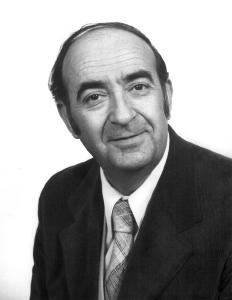
Linguist and Semitist
Shelomo Morag, scholar, author and Genizah researcher, died in Jerusalem on 5 September, 1999, aged 73. This tribute is by Dr Avihai Shivtiel, Visiting Research Associate in the T-S Unit.
With the passing of Professor Morag, the Genizah has lost one of its outstanding researchers, and the Genizah Research Unit one of its strongest supporters.
Shelomo Morag, whose impressive list of publications included a volume devoted to vocalized talmudic texts from the Genizah (Cambridge, 1988), visited Cambridge many times and was awarded a D.Litt. by the University of Cambridge in recognition of his invaluable contribution to many areas of research.
These included the reading traditions of various Jewish communities around the world, Semitic linguistics and philology, and, in particular, the Hebrew language.
Morag was born in Palestine in 1926 into a family that combined scholarship, commerce and public duties. His father, a businessman, devoted his evenings to writing a commentary on the Midrash Rabbah, which he published some thirty years ago.
Shelomo's mother was active for many years on the Ramat Gan Municipal Council, and his younger brother, who died in his early forties, was a leading economist and professor at the Hebrew University.
Morag received his academic education at the same university and later became one of its distinguished scholars.
He had published his first article when he was only fifteen, and had begun learning Arabic at the age of five, becoming fluent in the language and winning the admiration of Arab scholars, who were surprised to hear an "Ashkenazi'' conversing in their language.
Learning Arabic at such an early age had been the idea of Morag's father, who had a clear vision of Jewish-Arab co-existence and the importance of a common tongue.
I studied under Professor Morag for nearly five years as an undergraduate and postgraduate student, and vividly remember his lectures, which attracted large audiences from a variety of departments. One lecture was enough to convince a student never to miss another.
Morag's erudition, depth, sense of humour and friendliness won him widespread love and admiration. His outstanding scholarship and academic achievements never diminished his ability to cope with everyday matters, to share with his students his rich experiences inside and outside the university, and to tell and enjoy jokes with all who regarded him as a friend as much as a mentor.
At home in the world at large, he visited many countries, read papers at conferences, and conducted well-attended and scholarly seminars.
The city and University of Cambridge had a special place in his heart, and he took the opportunity of visiting both whenever he could. He was an Overseas Fellow at St John's College and a Visiting Research Associate in the T-S Genizah Unit in 1975-76.
His lectures as a Visiting Scholar at the Faculty of Oriental Studies that year enriched us all, and we shall remember him as one of the last giants of Semitic studies.
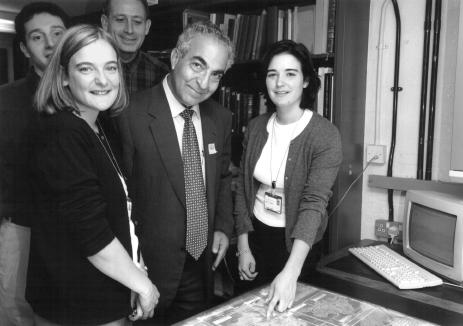
Outgoing Israeli Envoy to Dublin, Mr Zvi Gabay, at the T-S Unit
![[Cambridge University Library logo]](/logos/ul50.gif)